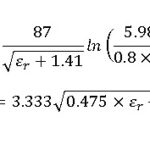What is PUCCH and UCI in LTE? What are its Formats?
In LTE networks, efficient communication between User Equipment (UE) and eNodeB (evolved NodeB) is essential for smooth data transmission and service delivery. Today, we are going to explore two important elements in this communication process: PUCCH (Physical Uplink Control Channel) and UCI (Uplink Control Information), along with the different formats of UCI. Let me explain it in a way that helps you understand how these components work and how they affect the LTE communication process.
What is PUCCH?
PUCCH is a channel used by the User Equipment (UE) to send control information to the eNodeB. Control information in this context refers to things like scheduling requests, hybrid automatic repeat request (HARQ) feedback, and channel quality indicators (CQI), which are all essential for the proper functioning of the LTE network.
PUCCH operates in the uplink direction, meaning it is used by the UE to transmit information to the network. Since LTE is a time-division duplex (TDD) system, the uplink and downlink transmissions are separated in time. This allows for more efficient utilization of the available spectrum, and PUCCH plays a critical role in facilitating communication during the uplink phase.
What is UCI?
UCI, or Uplink Control Information, refers to the specific types of control information that are transmitted by the UE to the eNodeB. This information is sent on the PUCCH and includes several key pieces of data essential for managing data flow and ensuring optimal communication between the UE and the network. UCI allows the eNodeB to make decisions on scheduling, retransmissions, and other aspects of resource allocation for the UE.
The main elements of UCI include:
- Scheduling Request (SR): This is sent by the UE when it needs uplink resources for data transmission.
- HARQ Acknowledgement (HARQ-ACK): This feedback indicates whether the previous transmission was received correctly by the eNodeB.
- Channel Quality Indicator (CQI): This is sent by the UE to inform the eNodeB about the channel conditions in the uplink, helping the network allocate resources more efficiently.
- Precoding Matrix Indicator (PMI): This indicates the optimal precoding matrix for MIMO (Multiple Input, Multiple Output) configurations in the uplink.
PUCCH Formats
- PUCCH Format 1: This format is used for sending HARQ-ACK and scheduling requests (SR). It’s used when there is a need to acknowledge the reception of data or request resources for uplink transmission.
- PUCCH Format 1a: This is used for HARQ-ACK feedback with a single bit of acknowledgment (ACK or NACK) for each HARQ transmission.
- PUCCH Format 1b: This format is also used for HARQ-ACK but can carry multiple bits of information, which is useful in more complex scenarios.
- PUCCH Format 2: This format supports the transmission of CQI feedback from the UE to the eNodeB. It is used when the UE needs to report its channel conditions so the eNodeB can optimize the downlink transmission.
- PUCCH Format 3: This format supports the transmission of both CQI and scheduling requests in a single message. It is used when the UE needs to report channel quality and also request uplink resources.
- PUCCH Format 4: This format is used to transmit UCI including HARQ-ACK, SR, and CQI simultaneously. It is a more efficient way to transmit multiple types of control information on the same resource.
Importance of PUCCH and UCI
PUCCH and UCI play vital roles in ensuring the efficiency of the LTE system. The PUCCH allows the UE to communicate essential control information back to the network, enabling the eNodeB to manage resources effectively. UCI, which is carried on PUCCH, provides critical information like scheduling requests, feedback for data transmission (HARQ), and channel quality, which helps the network adapt to changing conditions.
As we’ve seen in previous articles, the optimization of network resources in LTE is crucial for providing high-speed data and improving the user experience. Without efficient control channels like PUCCH and proper transmission of UCI, the LTE network wouldn’t be able to function smoothly, leading to poor service quality, dropped connections, and inefficient resource utilization.


